How occupational therapy helps and why it's great for any and every child
When we think of occupational therapy, we have tendencies to associate this practice with those with some type of neurodiverse condition. We most often hear about occupational therapy in terms of how it helps children with autism, cerebral palsy, and aging adults.
What many do not understand, however, are the practices involved in occupational therapy, Their benefits can extend to neurotypical children and adults, as well.
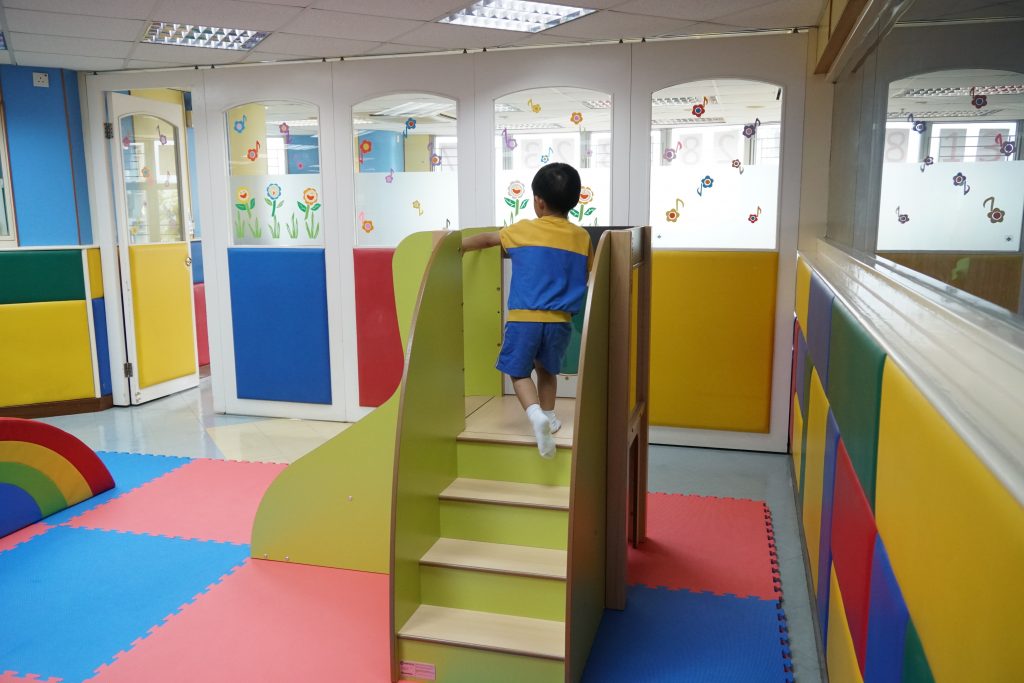
Occupational therapy works to develop or reinforce skills related to cognitive, social, emotional, communication and physical abilities in babies, toddlers, children, adults, and seniors.
“The goal is to enhance development, minimize the potential for developmental delay, and help families to meet the special needs of their infants and toddlers” (Opp, n.d.).
Occupational therapy services range from strengthening current skills to skill-building in areas such as toileting, fine motor skills, or life skills in a wheelchair.
Contrary to popular belief, occupational therapy does not require a child to have any type of disability. A child does not need early intervention, or “red flag” for them to receive services.
Children who have disabilities, are at risk for developing disabilities, or have no diagnosis at all are all able to receive occupational therapy services.
“A child's main job is playing and learning, and occupational therapists can evaluate kids' skills for playing, school performance, and daily activities and compare them with what is developmentally appropriate for that age group” (Harron, 2014).
Occupational therapy for children, in general, is a wonderful tool to help raise self-esteem, and confidence. It helps to further develop and strengthen skills that will be used throughout their lives.
Methods in Pediatric Occupational Therapy
Pediatric occupational therapy strategies are developed based on the child’s current level of cognitive and physical abilities. As such, it is important to note that children do not need to be struggling or have a diagnosed condition to receive services because each therapy plan is tailored to an individual child.
There is no one-size-fits-all approach to occupational therapy, which really is a wonderful thing for parents and children alike. There is no pressure to meet a specific goal by a specific deadline in comparison to another child, everything is planned out to meet the specific needs of each child.
Occupational therapy may aid children in everyday tasks such as:
- Dressing themselves including zippers and buttons
- Brushing their teeth
- Combing or putting up their hair
- Tying or velcroing shoes
- Toileting
- Bathing
- Drawing
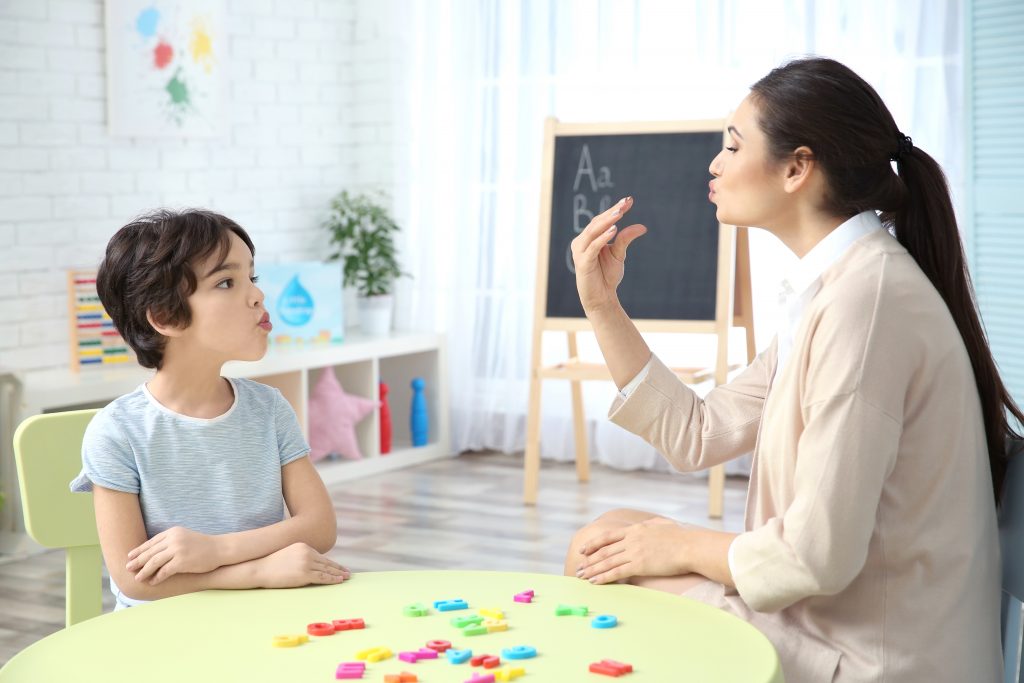
Sensory Integration Therapy
Many children have issues with sensory processing via any or all our five senses – sight, smell, taste, touch, and/or hearing.
Again, it is not necessary that children have a diagnosis of sensory processing disorder (SPD), autism, ADHD, or other conditions that have some degree of sensory avoidance to them to receive occupational therapeutic services.
Sensory integration therapy can range from mild to severe avoidance of sensory stimuli and each strategy will be planned out according to the current cognitive abilities of each individual child receiving therapy.
Sensory integration therapy helps children get acquainted with various experiences we find in everyday life.
This can involve the use of playdoh or clay, textured blankets or seats, light or dark lighting in a room, textured balls or toys, light-up toys, toys that make noise, or sensory bins containing water, sand, aqua beads, ice, or any other textured substance that children can put their hands into.
These specific toys and experiences are tailored to where the child might have an avoidance or resistance to engage and used to help children overcome their struggles.
If a child has a severe avoidance of the texture of playdoh or a similar type of clay, for instance, an occupational therapist can help. They may build a sensory bin filled with small rocks or sand and simply have one chunk of playdoh in one corner of the bin.
Throughout the time that the child plays, the therapist might play with the playdoh themselves, making shapes out of it or encouraging the child to touch it or mimic their actions.
Each step is focused on building up the child to eventually holding the playdoh and overcoming their aversion to it.
Sensory integration therapy is an important part of occupational therapy in children because it involves realistic scenarios that children will encounter throughout their life. It helps develop life skills and coping mechanisms for when they find something in which one or all their five senses disagree.

It may help them overcome an aversion to a popular substance, such as playdoh, grass, or sand, which they might likely find often in school and as they grow up.
Sensory integration may also help with situations such as rooms with bright lights, like a classroom, or loud noises, like a vacuum – all situations that are not unique and may be found frequently throughout everyday life.
Sensory integration therapy is meant to expose children to sensory stimuli they might be avoiding in very small steps and work them up to overcome their aversions to these situations.
Coordination Activity Skill-Building
Struggles with coordination are not unique to children who have disabilities or specific conditions. Coordination is a skill that is particularly difficult and still very much undergoing development for children.
Occupational therapy can help develop these vital, life-long skills in young children using two specific sets of activities – bilateral and hand-eye coordination.
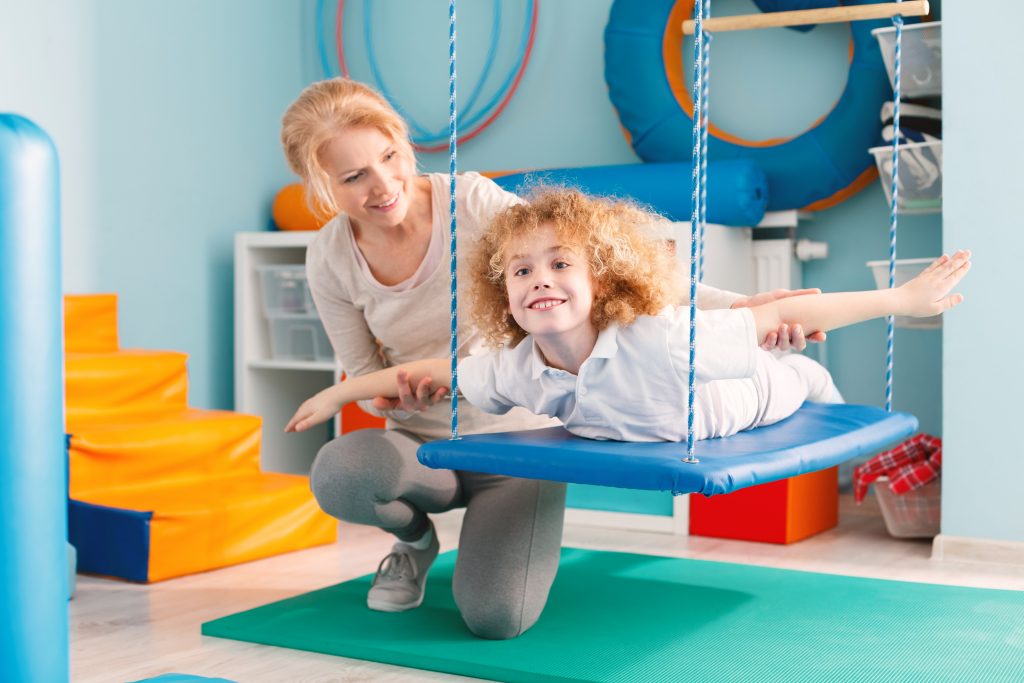
Bilateral coordination activities involve teaching children to use both sides of their body to accomplish a task. This can involve teaching a child to pull a rope using a hand-over-hand method or stabilize a piece of paper with one hand while they cut the paper with scissors in their other hand.
Children may learn to put up their hair into a ponytail as a part of bilateral coordination strengthening. These are complex movements and might be most difficult for children with disabilities or certain diagnosed conditions, however, it is still an important skill in which all children can benefit from assistance.
Hand-eye coordination involves using one’s hands in conjunction with eye movement. For instance, when someone throws a ball to a child, good hand-eye coordination would allow that child to catch the ball.
They visually see the ball being thrown and can react with their hand in time to catch it. Occupational therapists can work with children to throw and catch balls, hit a ball off a tee, etc.
Hand-eye coordination will be especially important throughout life for events such as learning to play a sport or when young adults learn to drive a vehicle.
Fine Motor Skill-Building in Occupational Therapy

Fine motor skills are ones that may take significant time for children, depending on their current cognitive abilities. Fine motor skills involve holding a pencil or marker correctly, using scissors to cut paper, or pinching beads to string on a string or place onto a tray in a pattern.
For a very young child, fine motor skills could be those involved with pinching cheerios for self-feeding. Some children grasp these concepts very quickly, while others may struggle.
Occupational therapy can help children with these skills and build self-esteem and confidence simultaneously!
Gross Motor Skill-Building in Occupational Therapy
What toddler or young child doesn’t love running around, jumping, climbing, and playing?
For some, though, activities such as peddling a bicycle or jumping through a hopscotch game may be difficult.
During occupational therapy, therapists can work on the gross motor skills and muscle groups that help with riding a bicycle. They can also assist children with tumbling on mats, throwing bean bags, tossing or kicking a ball in a net, or hopping on one foot or from one foot to another.
Gross motor games in pediatric occupational therapy can help children be more confident with their peers in daycare, out at recess, or in extracurricular activities. These activities can also aid in coordination which can keep a child safe and avoid physical harm.
Occupational Therapy for Relationship Building
One of the most basic elements of occupational therapy for children involves bringing the family together. It helps develop and strengthening skills together as a unit.
Occupational therapists strive to get family members involved with skill-building. This will help them throughout the course of their lives and not just with one specific task.
They use methods involving frequent communication and coaching so that if a similar situation should arise in the future, parents and caregivers know how to respond and give the child the assistance they need to overcome the challenge.
Occupational therapy is an invaluable tool for all families in the sense that parents do not come with a manual – they must learn everything as they go and at some point, or another, expert help may very well be needed and appreciated!
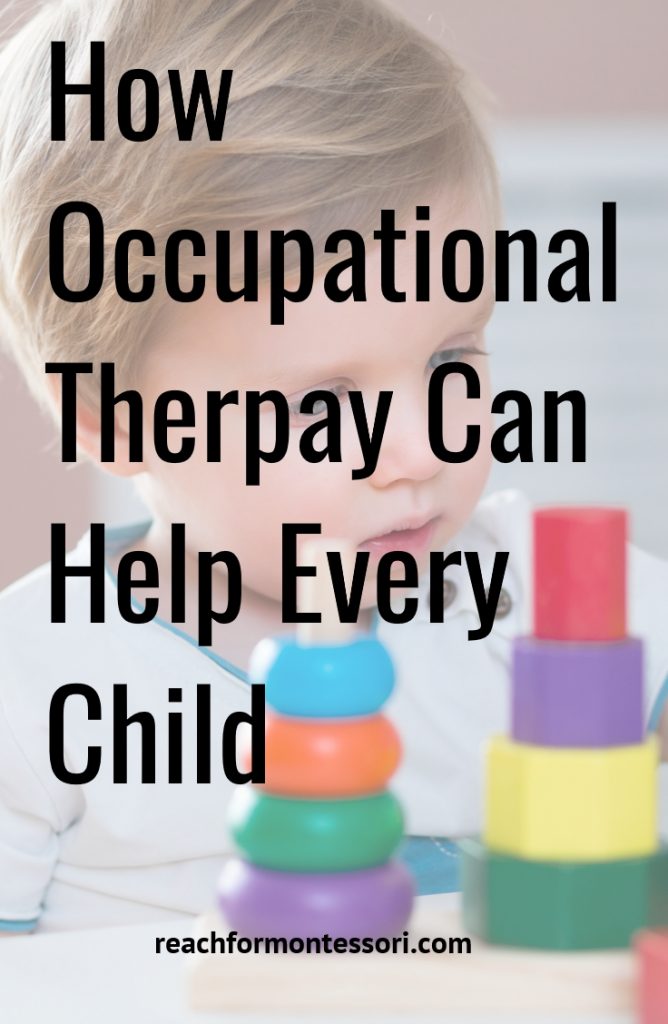
Finding outside-the-box solutions to simple problems such as self-feeding may give new parents the confidence-boost they need. This can help their child overcome each new milestone in their life.
If children receive services via early intervention, IDEA (Individuals with Disabilities Education Act) mandates that occupational therapy services are received in “natural environments”, such as in the home, classroom, or playground (Opp, n.d.).
Occupational therapists will, therefore, be interacting with family members and caregivers who are a typical part of a child’s day. Their assistance and recommendations can be notated for further reference with the child.
This will further assist in the development of strong relationships and a support system that will benefit a child as they learn new skills and take on new challenges in life.
Self-esteem & Occupational Therapy for Children
(While Montessori discourages praise for completing activities, it's an effective tool in an OT setting!)
When we look at all that occupational therapy has to offer children with disabilities or delayed abilities, we can clearly see progress made for each child who may be struggling with a particular skill or ability.
What may be overlooked, however, is what occupational therapy can offer children who do not have a diagnosed condition. It can help with children are otherwise considered ‘neurotypical’!
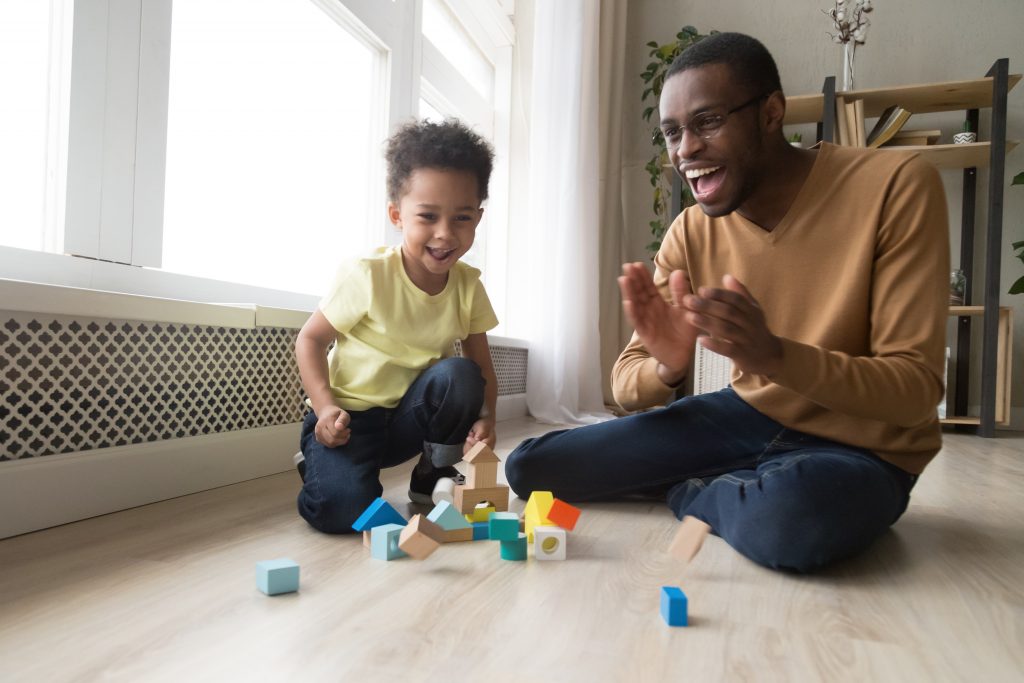
Though all children can benefit from occupational therapy and the life-long skills it helps brace and strengthen, self-esteem is one of the greatest achievements to come of occupational therapy for neurotypical children.
Self-esteem is the foundation on which most childhood experiences are formed. A child’s very sense of self depends on their level of self-esteem.
“Every child’s self-esteem grows with each experience of successful interactions through positive words. It is important to build a child’s belief that they can handle their life and handle it well” (Newman, n.d.).
It could even be suggested that society places greater value on individuals with higher self-esteem as they typically have higher rates of success and independence.
Self-esteem fosters everything, even from infancy.
From the very moment babies are born, parents are taught to praise them. (In one form or another) They are praised for a good latch at the breast, for sleeping well, for trying to roll over, sit up, crawl, and walk . Each of those positive experiences parents and caregivers shower their child in praise.
Each “good job” or “look at you go!” is another verbal confirmation for an eager parent to keep their child’s spirits and self-esteem radiating so they can get to the ultimate goal – success.
So, when a child is placed into occupational therapy to reinforce current abilities and further develop those that may be slightly delayed or lacking, self-esteem building will always be the backbone.
If a child does not feel as though they can succeed or accomplish the goal, they likely won’t.
With praise and encouragement and each tiny step of the process mastered, however, a child will eventually succeed. Through each rewarded success, self-esteem continues to grow until the child has the “can-do” attitude! They will continue to thrive both in therapy and beyond.
Occupational therapy has so many benefits to offer children of all ages and abilities. For both neurotypical and neurodiverse children, occupational therapy can help strengthen everyday life skills, overcome difficult sensory situations, and support lifelong self-esteem.
Pediatric occupational therapy can assist with speech, gross motor skills, fine motor skills, coordination, sensory stimuli, social and emotional development, and other cognitive and physical abilities. It is highly recommended that parents stay involved throughout the entire process. This helps parents support their child’s development and self-confidence.
Occupational therapy is a creative, child-driven, and unique experience in which all children should experience to live their best lives!
References
Harron, Wendy (2014, March). Occupational Therapy. KidsHealth from Nemours. Retrieved from https://kidshealth.org/en/parents/occupational-therapy.html
Newman, Sherie (n.d.). The Importance of Self Esteem. Northern Illinois University Child Development and Family Center. Retrieved from https://www.chhs.niu.edu/child-center/resources/articles/self-esteem.shtml
Opp, Ashley (n.d.). Occupational Therapy in Early Intervention: Helping Children Succeed. The American Occupational Therapy Association, Inc. Retrieved from https://www.aota.org/About-Occupational-Therapy/Professionals/CY/Articles/Early-Intervention.aspx
I hope you found this post informative! Occupational therapy has worked wonders with one of my children.
I recommend giving it a try for every parent struggling with their child's behavior!
Montessori requires a child to utilize their senses. So, if you find your child struggling in a Montessori environment, or with certain situations, an occupational therapist could be the solution!
Cheers and don't forget to subscribe!

I didn’t realize how much occupational therapy can help with simple everyday tasks!
This is a great article packed with helpful information. I love the segment on childrens self esteem. I do agree with positive comments and experiences it does build their self esteem
This is so insightful and informative. I never thought that occupational therapy can be so beneficial to children. I have a baby but this is so interesting for future reference. Thanks!
Love this. I’ve heard amazing things about occupational therapy!
This was an interesting post. I didn’t realize these services could help those without disabilities as well. Thanks for sharing.